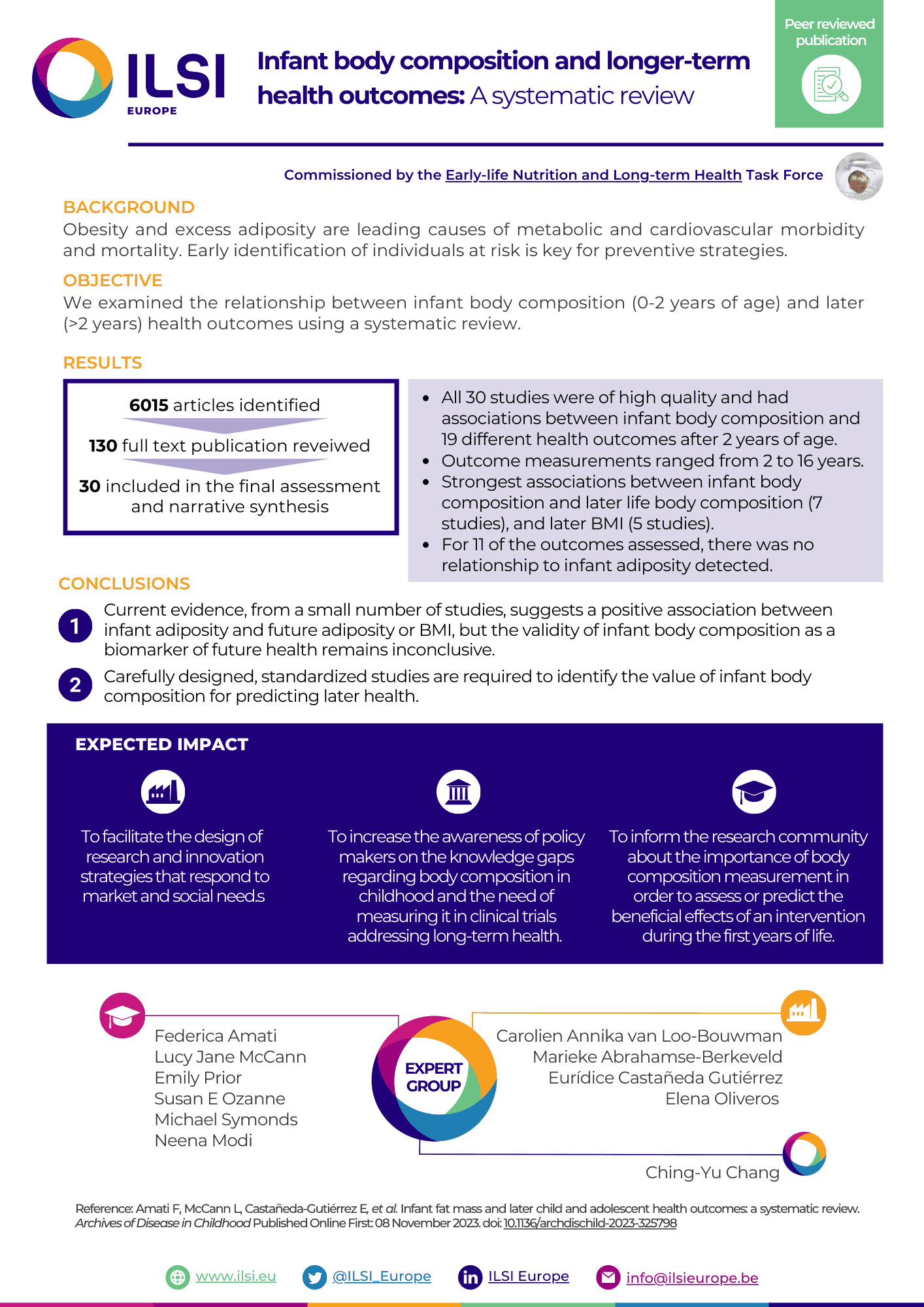Objective
Obesity and excess adiposity are leading causes of metabolic and cardiovascular morbidity and mortality. Early identification of individuals at risk is key for preventive strategies. We examined the relationship between infant body composition (0–2 years of age) and later (>2 years) health outcomes using a systematic review.
Design
We preregistered the study on PROSPERO (ID 288013) and searched Embase, PubMed and Cochrane databases for English language publications using the Medical Subject Headings (MeSH) terms ‘infant’ and ‘body composition’ and ‘risk’ between January 1946 and February 2022. We included studies which assessed infant body composition using predetermined in vivo methods other than body mass index (BMI).
Results
We identified 6015 articles. After abstract screening to assess eligibility, we reviewed 130 full text publications. 30 were included in the final assessment and narrative synthesis. Meta-analysis was not possible due to heterogeneity of results. All 30 studies were of high quality and reported associations between infant body composition and 19 different health outcomes after 2 years of age. Outcome measurements ranged from 2 years to 16 years. The strongest associations were found between infant fat mass and later fat mass (7 studies), and later BMI (5 studies). For 11 of the outcomes assessed, there was no relationship to infant adiposity detected.
Conclusions
Current evidence, from a small number of studies, suggests a positive association between infant adiposity and future adiposity or BMI, but the validity of infant body composition as a biomarker of future health remains inconclusive. Carefully designed, standardised studies are required to identify the value of infant body composition for predicting later health.
Download the full article here.
Download the article one-pager below
